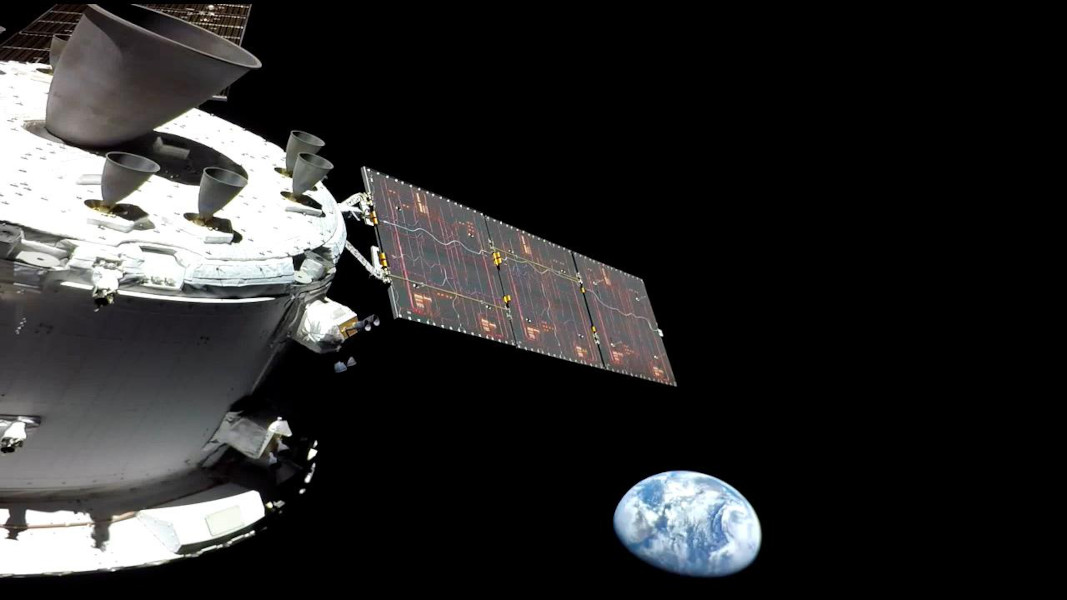2023年11月18日
Planet Earth from Orion
Image Credit: NASA, Artemis I
Explanation: One year ago a Space Launch System rocket left planet Earth on November 16, 2022 at 1:47am EST carrying the Orion spacecraft on the Artemis I mission, the first integrated test of NASA’s deep space exploration systems. Over an hour after liftoff from Kennedy Space Center’s historic Launch Complex 39B, one of Orion’s external video cameras captured this view of its new perspective from space. In the foreground are Orion’s Orbital Maneuvering System engine and auxillary engines, at the bottom of the European Service Module. Beyond one of the module’s 7-meter long extended solar array wings lies the spacecraft’s beautiful home world. Making close flybys of the lunar surface and reaching a retrograde orbit 70,000 kilometers beyond the Moon, the uncrewed Artemis I mission lasted over 25 days, testing capabilities to enable human exploration of the Moon and Mars. Building on the success of Artemis I, no earlier than November 2024 the Artemis II mission with a crew of 4 will venture around the Moon and back again.
Tomorrow’s picture: Sun day
猎户座的地球影像
影像提供: NASA, Artemis I
说明: 一年前的11月16日(三)美东凌晨1:47,一艘名为阿尔忒弥斯1号(Artemis 1)的太空发射系统火箭离开地球,以执行NASA的首个深空探索系统综合测试任务,并推送猎户座飞船前往月球。从肯尼迪航天中心颇具历史的39B号发射场升空的1个多小时之后,猎户座的一部外挂摄影机,从太空记录了它的新视野。影像前景是位于猎户座欧洲服务舱底部的轨道操纵系统引擎及辅助引擎。在这个模组舱翼展7米的太阳能板阵列后方,则是飞船美丽的家乡─地球。未搭载人员的阿尔忒弥斯1号任务用25天的时间,测试了它协助人类探索月球和火星的能力。植基于阿尔忒弥斯1号的任务圆满成功,在2024年11月之后,搭载4位宇航员的阿尔忒弥斯2号任务,将在旋绕过月球后返回地球。
明日的图片: Sun day







